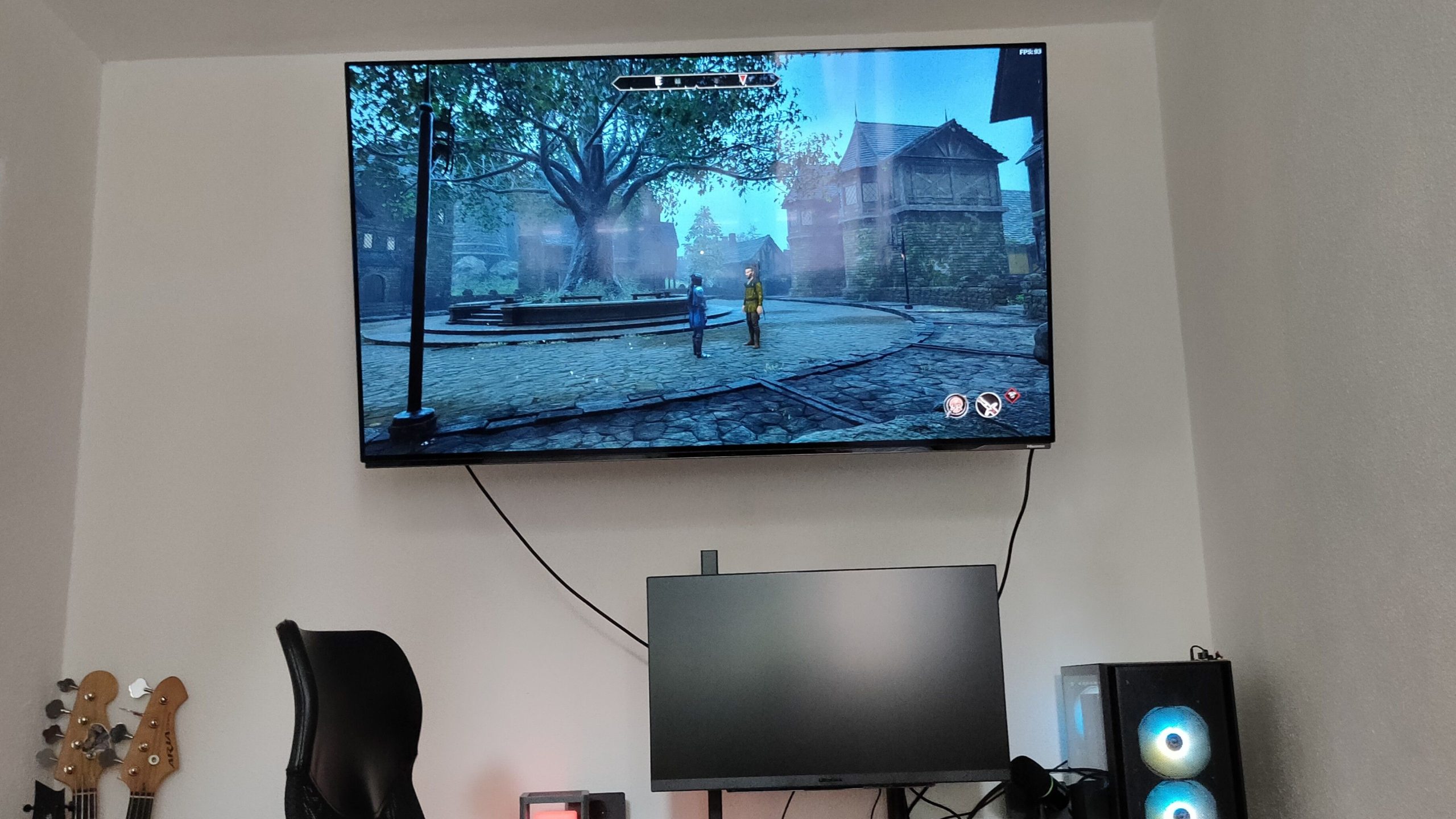If you’re a PC gamer utilizing a 1080p display, it’s likely that you’ve experimented with upscaling features and found the results disappointing. I can relate—I once dismissed upscaling altogether. However, upon upgrading my display to a higher resolution, including a 4K OLED TV, I became a believer in the technology.
Understanding Upscaling and Its Challenges with 1080p Displays
To grasp why upscaling falls short on 1080p screens, it’s essential to comprehend what upscaling entails. In the gaming realm, "upscaling" refers to the techniques employed by graphics cards to artificially increase the resolution of images. The most common algorithms include NVIDIA’s DLSS, AMD’s FSR, and Intel’s XeSS. Each of these methods typically features multiple settings, generally labeled as Quality, Balanced, and Performance. As the terms imply, Quality focuses on image fidelity, Performance prioritizes frame rates, and Balanced aims for a middle ground.
The core principle behind these upscaling technologies is to transform a lower-resolution frame, such as one rendered at 720p, into a semblance of a high-resolution image. While these algorithms are sophisticated, the shortcomings of 1080p displays become apparent when the original resolution lacks sufficient detail. In instances where a game runs at a lower resolution, the upscaling algorithm must interpolate missing information, often resulting in a lackluster image quality characterized by ghosting, blurred textures, and soft edges.
Limitations in Detail and User Interface
One of the most pronounced issues arises with user interface components such as text, which can become completely illegible when upscaled, even in the highest Quality mode. Fine details—like the outlines of characters and projectiles—tend to merge into the background, particularly during rapid camera movements. Essentially, an upscaled image on a 1080p display remains visually acceptable only when viewed from a static position. This limitation highlights that upscalers are designed with higher resolution screens in mind. If 1080p is your intended display format, and upscaling isn’t yielding satisfactory outcomes, you might as well play at native 1080p resolution, even if it means sacrificing some frames per second (FPS).
Discovering Upscaling Potential with Display Upgrades
I previously took my time in upgrading my monitor, finally committing to a 1440p display after constructing a new gaming PC. Alongside my 4K OLED TV, I now utilize upscaling in nearly every game I play, excluding competitive online titles. In such scenarios, even slight increases in input lag and potential visual artifacts aren’t worth the trade-off for additional FPS.
Despite the fact that my graphics card, an RX 6800 XT, is not the latest high-end model, it still delivers impressive performance. Supporting the aging AMD FSR 3.1 upscaling algorithm, I am continually amazed at the quality of upscaled content. Newer titles like God of War Ragnarök and Oblivion Remastered appear stunning when upscaled to 1440p and particularly at 4K. When playing at 1440p, I set the upscaling quality to Native, and for 4K, I opt for Quality. This is due to the increased information available in 4K resolutions, allowing aggressive upscaling to still generate excellent results.
The Shift Away from Native Resolution
For those who favor a native resolution approach—something I once championed—this may come as a hard truth: gaming at the native resolution of your display is becoming increasingly unfeasible. Modern upscaling technologies, such as DLSS 4 and FSR 4, have advanced to a point where it’s often difficult to differentiate between native and upscaled outputs. This trend is only expected to improve over time.
Contrary to the belief that upscaling is a mere shortcut that replaces proper game optimization and superior hardware, it serves as a clever rendering technique designed to extract more performance from a graphics card’s limited capabilities.
Embrace Upscaling from the Start
The misconception regarding upscaling often stems from its integration into games from inception, with titles like Starfield exemplifying this approach. Such early adoption is not inherently problematic; rather, by embracing upscaling during initial development stages, game developers can enhance visual fidelity through sharper textures and improved detail, complemented by ray tracing features. However, it is important to note that effective upscaling relies on a well-optimized engine, and should never be used as a justification for poor optimization standards.
Investing in Better Displays
While 1080p has long been the standard for gaming monitors, it’s clear that the time has come to move beyond it. Prices for 1440p monitors have significantly decreased, with options like the Acer Nitro KG271U and AOC Q27G4XN now available for under $200. Even if your current PC hardware struggles to run the latest games at this resolution, it remains a worthwhile investment that will continue to serve you well in the future.
If high-end gaming is your focus, consider a larger screen experience with a 4K TV. The affordability of 4K televisions has drastically improved, allowing purchases like the TCL Q65 43" TV for around $218 during sales. Just ensure that any television chosen has a dedicated game mode to reduce input lag.
In conclusion, if your experiences with upscaling thus far have been disappointing, it may be time to evaluate your display. Upgrading to a higher-resolution monitor or a 4K TV could transform your gaming experience, allowing you to fully appreciate the benefits of upscaling technology.




